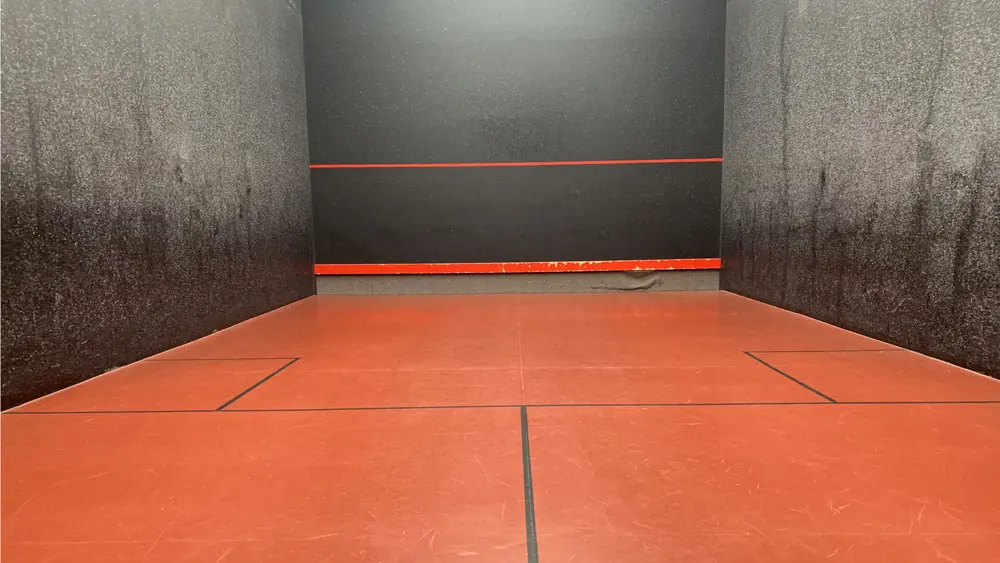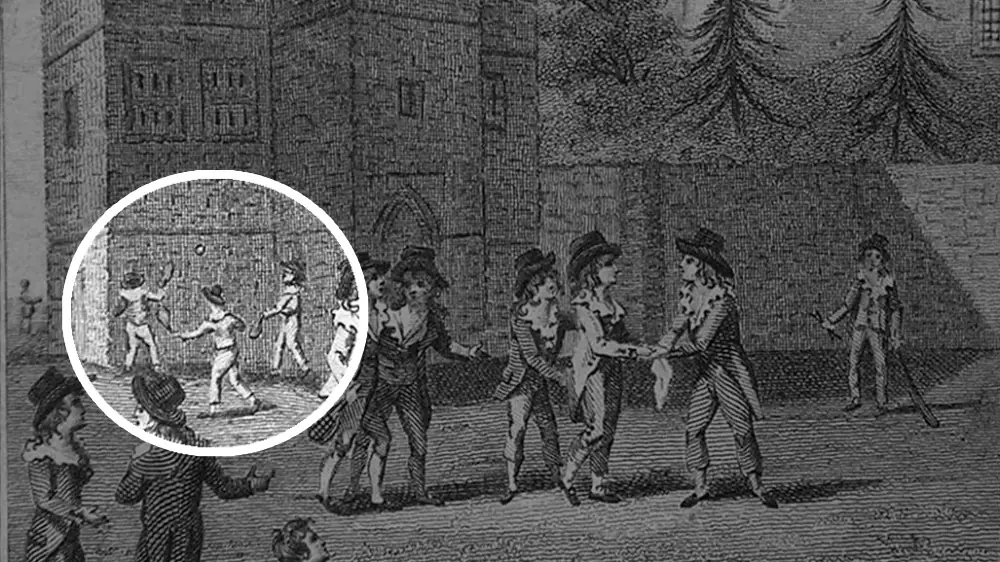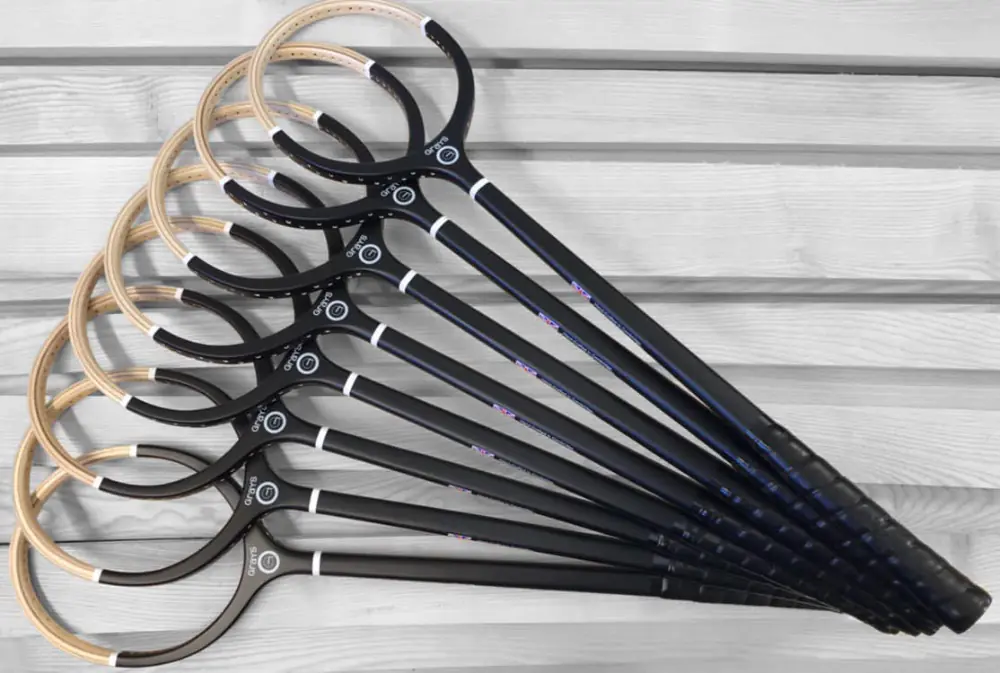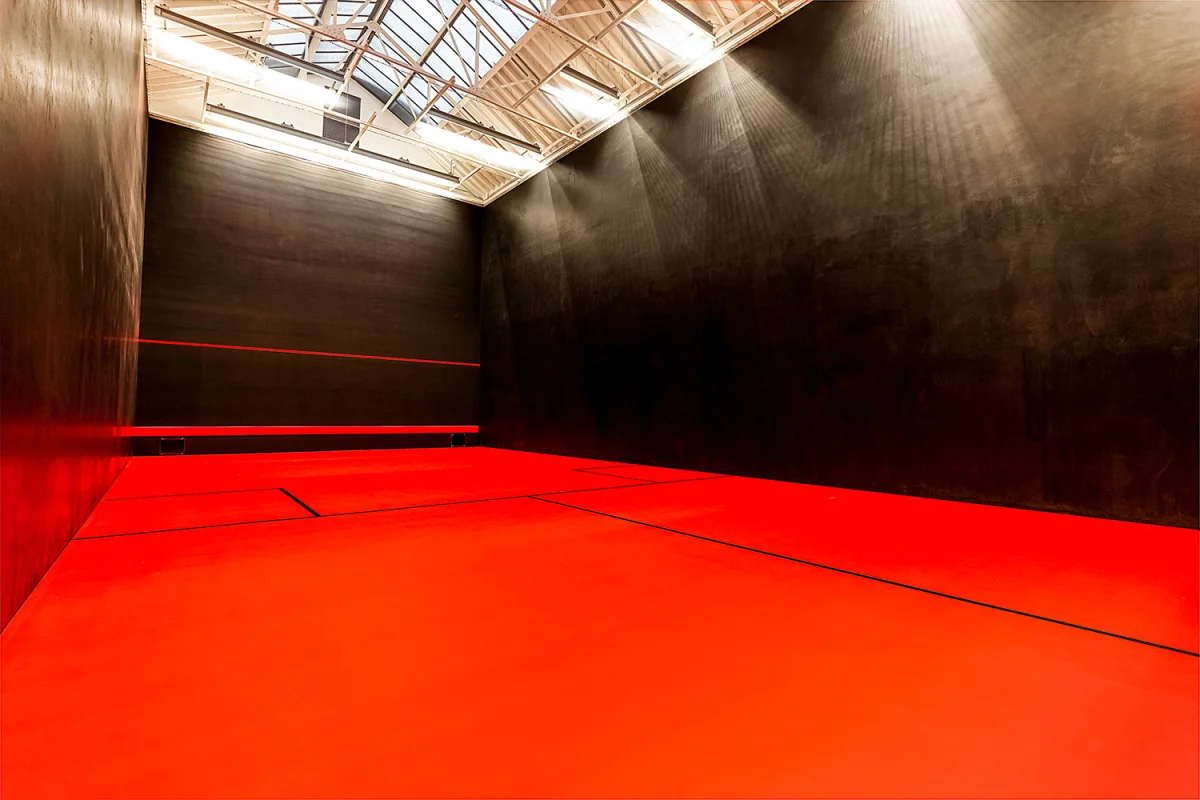11 November 2022 / 4-Min Read / Translate
I’m not a historian, just a person interested in the history and development of the sport we love: Squash. Even though the events described occurred only a few hundred years ago, many of the details have been lost, but historians generally agree that Rackets started within debtors’ prisons some time in the 18th Century (between 1700 and 1799). As a side note, debtors’ prisons are an interesting rabbit hole to explore if you have time).

The beautiful red floor and black walls of Wellington Rackets Court in Berkshire
Essentially, prisoners took the idea of Fives, which was simply hitting a ball against the wall with their hands, and started using Real Tennis rackets. BTW, the game we now know as Tennis, wasn’t invented until 1872, but more on that another time. I’m unclear exactly what ball they used, probably the same ball as Fives, again more on that another time, but it’s worth pausing for a moment to talk about variety.
Nowadays, all sports are so well defined that it’s hard for us to imagine a time when things were more like the wild west. At the time of these events, there were no sports associations. Each group of people played how they wanted. For example, one prison might have played with a side wall, others not, one with a bigger harder ball, the other softer and smaller. There was no standardisation at all.
That theme followed onto squash, which didn’t standardise the court size and ball specifications until the early 20th century. So, here was have a group of people in prison, who played game with a ball and racket against a wall. This eventually spread outside the prisons to alleyways and other suitable places in and around London. Again, each game might have been slightly different, even the scoring could be adjusted to suit the needs of the players.
Schools came next, and such was the popularity of the game that some schools began to build courts with four walls to enclose the game, although this seemed to happen much later. Below is part of a lithograph from the late 1700s showing boys playing an early version of the game at Harrow school.

I’ve highlighted the area in question, and it’s interesting to note that it seems three boys are playing at the same time. This could be artistic license or it could be how it was played when there were lots of boys who wanted to play.
Eglinton Castle in Scotland, is credited with the first indoor rackets hall. Let’s pause for a moment to realise that outdoor squash is in fact going back to its roots. Hitting a ball against a wall, either with the hand or with a racket, as a sport was an outdoor game for its early life. We now associate squash, rackets, badminton, racketball and all their variations as “indoor sports” but that’s not how it started.
The racket Hall had large marble slabs on the floor and was dark-walled. With the limited research I’ve done, I didn’t find details of the exact rackets used or when they became standardised. The current rackets racket is longer than squash rackets and the ball is harder. Unlike other games, the equipment used in rackets has more or less remained the same. As you can see from the image below, the rackets are still made from wood and are longer than squash rackets.

Still made from wood – incredible!
For reasons unclear to me, Rackets went into decline after the second world war. Perhaps it was the cost of building and maintenance – rackets courts are much bigger than squash courts: 9.1 metres wide by 18.3 metres long, compared to 6.4 metres wide and 9.75 metres long. Squash had been gaining popularity and due to its smaller court size and being easier to learn and play, this may have had an effect. There are only two companies still making rackets rackets.
I was born and grew up a short bus ride away from Harrow, one of the birthplaces of rackets and squash. I can’t remember how, I think it was a phone call, but I heard that the Rackets Master at Harrow school was looking for an assistant, so I applied and received an interview. It was made clear to me that my sole responsibility would be to shout “STOP!” from the balcony when I thought it looked dangerous. Coaching and teaching was to be left to the Master, which was perfectly fine as I knew nothing about the game.
Being young and cocky, I thought we would go onto court and I would surprise the master with my skill and ability. The opposite was actually true. It took a little while to become accustomed to the speed, bounce and sheer size of the court and just when I thought I was ready to show off, the master hit a ball so that it hit the side wall. It was at that point my dream of dominating rackets came to an abrupt end. Hitting the ball straight after it has hit the side wall takes incredible timing, and I didn’t have it.

The rackets court at Harrow School – isn’t it beautiful?
Anyway, I didn’t get the job, but I still remember the sound the ball made when it hit the wall. Oh, by the way, that ball is heavy and hard, very hard, it that hits you, you are gonna have a story to tell your friends! I did contact the school about 5 years ago in the hope of making a video about rackets for my channel, but received no reply. Who knows, maybe one day, I’ll have the chance.
Oh, while I remember, Rackets actually was an Olympic sport in 1908, more than we can say for Squash! Anyway, rackets is still played around the world, but is clearly a specialist sport. I don’t think it’s unfair to say that its time has come and gone. Pockets of enthusiastic players still exist, but perhaps over time those will become smaller and smaller. I certainly hope not, I’d love to try rackets again.
Without racket there wouldn’t be squash. So, we must tip our hat to its forefather and thank those impatient boys waiting outside the rackets court who created what we call squash. I know this wasn’t an extensive history of the game, but I thought a brief introduction might interest current squash players. If you play or have played squash, have an interesting story to tell, please email me and we can chat.
I am pleased to say that I have been invited to play a game of rackets with Ben Cawston, world number one ranked rackets player. When and where are still to be decided, but fingers crossed it's before the zombie apocalypse!